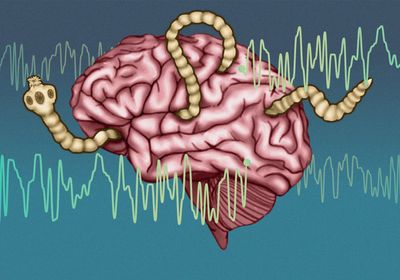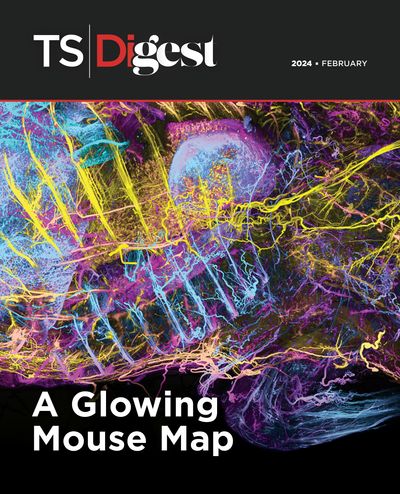How a Parasite Excites the Brain
Tapeworm larvae may cause seizures by releasing excitatory amino acids into the brain.
Brain infections caused by larvae of the tapeworm Taenia solium are common in many developing countries.1 Once nestled in the brain, the parasite causes neurocysticercosis, an infection characterized by recurrent seizures. Scientists knew that the host’s inflammatory response to the larvae contributed to seizures in neurocysticercosis, but it was unclear whether the larvae directly altered neurons’ electrical activity. 2,3
Now, researchers from the University of Cape Town report that tapeworm larvae directly affect neuronal firing by releasing excitatory amino acids, mainly glutamate, in their surroundings.4 Their findings, published in eLife, pave the way for developing potential new treatment options for seizures in neurocysticercosis.
For the study, the researchers applied extracts of the larvae or their secretions to brain slices while recording the cells’ electrical activity using the patch clamp technique. Since T. solium larvae are difficult to find, Anja de Lange, a postdoctoral researcher at the University of Cape Town and coauthor of the study, and her colleagues used Taenia crassiceps, a tapeworm that infects rodents and is genetically similar to T. solium, for most of the experiments.
In normal conditions, exposure to parasite preparations caused neurons to fire, but when the team blocked neuronal glutamate receptors, they found no signal. Elevated glutamate levels in the parasite preparations further confirmed glutamate’s involvement.
Finally, to confirm that T. solium exposure showed similar results, the team hunted for T. solium larvae in an endemic region of South Africa and harvested a few from local infected pigs. Puffing T. solium preparations onto human brain slices induced neuronal firing, an effect also mediated by glutamate.
Accumulating clinical evidence suggests that neurocysticercosis causes seizures in people with epilepsy who live in areas where T. solium is endemic, explained Jorge Burneo, a neurologist at Western University who was not involved in the research. “But we never had basic science evidence that that's the case.”
Moving forward, the team plans to zoom in on T. solium by examining the effects of the parasite at different life stages on human brain slices and the interplay between the parasite and the inflammatory changes it induces in the brain. “We are quite passionate about this disease being studied more,” said de Lange.
References
- World Health Organization. Taeniasis/cysticercosis. 2022.
- Stringer JL, et al. Exp Neurol. 2003;183(2):532-536.
- Robinson P, et al. PLoS Pathog. 2012;8(2):e1002489.
- de Lange A, et al. Elife.2023; 12:RP88174.


